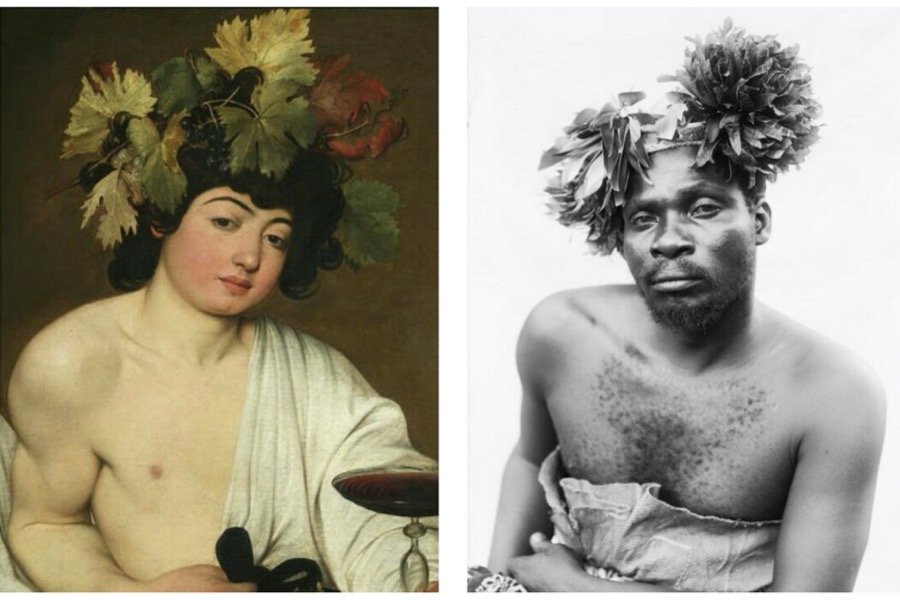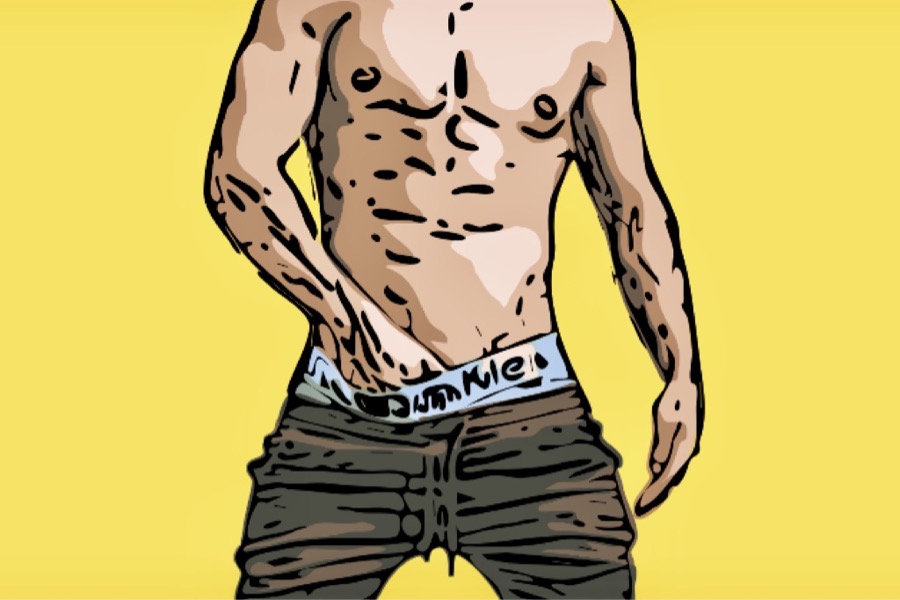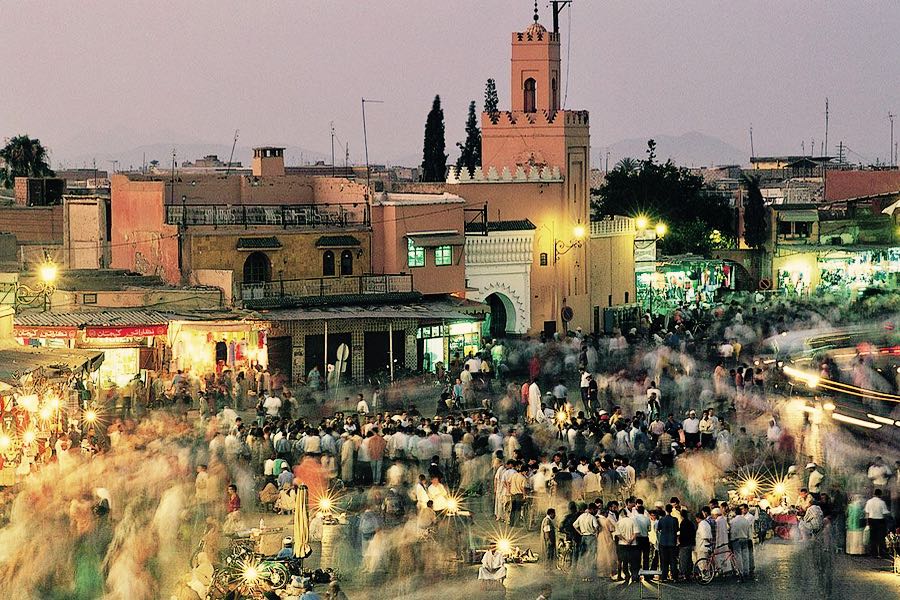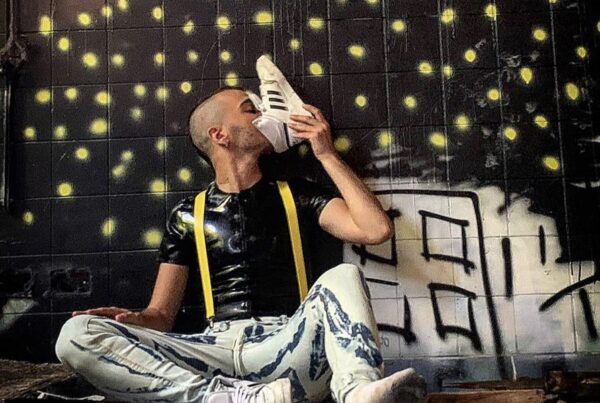Theophilus “Theo” Marboah is a medical student at the University of Pavia but is also interested in African and Afro-descendant contemporary art. In the web documentary “Tutti i giorni \\ everyday,” directed and produced by Kibra Sebhat and WeWorld, Theophilus talks about his relationship with the frequently negative representations of Afro-descendant people in Italy, a relationship that starts from the intimate dimension of quiet.
Good morning Theo, how are you?
Hi Stefano, I’m a bit cold, but I’m fine, thanks.
You’re from Verona, right?
Yes, I’m from Verona. I was born and raised in the land of the ‘pandoro’ [one of the most typical Christmas cakes in Italy; ed.]. Officially I am a student of medicine, but my days are also rhythmed by my deep interest in African and diasporic contemporary art.
You participated in the first episode of the web documentary “Tutti i giorni \\ Everyday”. Why did you choose to participate?
The web series was written by journalist Kibra Sebhat, and was created in collaboration with Tapeless Film [a production company based in Milan; ed.], and in partnership with Corriere della Sera [the most important Italian newspaper; ed]. Kibra contacted me in the first half of 2020, and I gladly accepted the invitation to participate in the documentary. I have always appreciated her work.
What is the documentary about?
The episodes describe the daily life of the so-called ‘new Italians.’ Our everyday life deliberately goes unnoticed, but it represents the evergreen leaves of the migration tree. The roots of this tree are bathed by the waters of the lands of origin. The trunk acts as a bridge between these and Italy. And the leaves, supported by the branches of our journey, or that of our parents, give birth to a reality that struggles to recognize their value and contribution.
In that episode, the singer-songwriter David Blank and you address the question of being black and Italian today. At the end of your conversation, two different ways of resisting the negative narrative and portrayal of Afro-Italian people emerge. While David’s approach is more explicit, yours is silent. Can you explain it to us?
In the episode, I take up Kevin Quashie’s thinking. In his book “The Sovereignty of Quiet: Beyond Resistance in Black Culture” (Rutgers University Press 2012, 204 pages), Quashie explores the interiority of the black person, a timeless dimension, alien to the racial language that dominates the world of exteriority. When we think of the history of African and Afro-descendant people, resistance is perhaps the first characteristic with which we describe our history.
But our daily life is not always lived as a form of resistance, and it is not always shaped by racial language. Not recognizing this means not recognizing fully our humanity. Far from the distractions of exteriority (“The true function of racism is to distract,” said Toni Morrison), the black person finds him/herself/themselves and returns to abide within his/herself or themselves. In the space of interiority, a space defined by Quashie with the concept of “quiet,” the black individual captures the reverberations of his/her/their desires, expectations, memories, and fears. The black person contemplates the essence of her/his/their human living. I live in this dimension: the dimension of quiet.
It seems a rather complex and long process of self-awareness. Could you tell us how you reached your dimension of quiet?
I can’t tell you what the starting point of my journey was. Without knowing it, I believe I have been aware of my blackness since childhood. If I think of my childhood, my favorite Power Ranger was Zach, the black one: I don’t think it was a coincidence. Obviously, the language to articulate my experience came later, and I’m still trying to construct it. The greatest help comes from the diasporic voices coming from the other side of the Atlantic. By taking an interest in and exposing myself to the African American experience, I discovered the gateway that enabled me to think of my blackness in a global context and to find similarities and differences with the various communities of the African diaspora.
 In various cases, however, racism and xenophobia of the world of exteriority are testing, at times violently, the person who belongs to an ethnic minority, such as that of an Italian of African descent. How do you respond to xenophobia from your inner dimension of quiet?
In various cases, however, racism and xenophobia of the world of exteriority are testing, at times violently, the person who belongs to an ethnic minority, such as that of an Italian of African descent. How do you respond to xenophobia from your inner dimension of quiet?
If the discourse is collective, I don’t think it’s up to both of us to respond. I don’t like doing that, but I will take the freedom of saying “we” to refer to black people in Italy. Racism, even in its most violent form, is nothing new to this country. It has been killing people since 25 August 1989. For three decades we have been knocking at the door of the legislative power. How long will it leave us out? I don’t have the answer. But I know that we will never be let in as long as those Italians, who do not suffer from the effects of racism on their skin, also show up. In order to fly, the sparrow needs two wings.
Through your artistic works, published on your Instagram profile, you try to open a dialogue between apparently different contexts. One, in particular, struck me: the diptych in which you put together the picture, taken in 1978, of a young Malian man holding a telephone receiver, and a seventeenth-century painting by Claude Deruet that portrays a noblewoman disguised as the Roman goddess Diana, holding a hunting horn. Do you believe that dialogue is still possible in 2020, now that in Italy too there is a heated debate on “blackface” and the representation of non-white bodies in the national media?
Dialogue is still possible as it is necessary precisely in times like today. In all this distracting noise, I am convinced that there is still time and space for those who enjoy privileges we do not enjoy to listen and to practice listening. They have to practice it.
 Yet, given the latest polls, in which Italian far-right parties (Lega and Fratelli d’Italia) result as the most popular ones, and the general refusal to address the colonial past of Italy, it seems that those Italians who enjoy privileges – which none of us enjoy, as we are both Italians of African descent – are still not ready to listen to us. Don’t you think that, at some point, we will have to force them to sit down and listen to us? Our generation has a responsibility towards the new ones who are defined as “foreigners”, despite being Italian (like both of us), hasn’t it?
Yet, given the latest polls, in which Italian far-right parties (Lega and Fratelli d’Italia) result as the most popular ones, and the general refusal to address the colonial past of Italy, it seems that those Italians who enjoy privileges – which none of us enjoy, as we are both Italians of African descent – are still not ready to listen to us. Don’t you think that, at some point, we will have to force them to sit down and listen to us? Our generation has a responsibility towards the new ones who are defined as “foreigners”, despite being Italian (like both of us), hasn’t it?
You are right, but it’s also true that the number of people who vote for right-wing parties (and I also add right-wing ones, like Forza Italia) doesn’t reach 50% of voters. So, in theory, the numbers are on our side. But we know that the dynamic of society is far more complex. The people who vote for those political parties will never take to the streets claiming the rights of those with a migrant background: they don’t share our vision of society.
But this image can be shared with the remaining percentage of the voters, our potential allies. However, this alliance cannot give results if their engagement is only performative. Being “woke” is one thing, taking responsibility in pursuing justice is another.
We’ve come to the end of our talk, Theo. Do you want to add something?
I just want to add the titles of two books that will be published in Italy in the coming months, and that will help enormously to continue building our dialogue: Einaudi will publish the Italian translation of “The Shadow King” by Maaza Mengiste (Faber and Faber 2020, 428 pages), while Tamu will publish the translation of “The Undercommons: Fugitive Planning & Black Study ”by Fred Moten and Stefano Harney (Minor Compositions 2016; 165 pages).
Stefano Duc
translation by Pier Cesare Notaro
©2020 Il Grande Colibrì
images: ©Theophilus Marboah
L: “Bacchus,” c. 1598, by Caravaggio. R: “Portrait of Manziga, (Avungura), Chief of Azande,” 1910-1915, by Herbert Lang.
L: “Portrait of Eleanor of Toledo,” 1545, Agnolo Bronzino. Dx: A photograph by Malick Sidibé, 1973.
L: “Portrait of a Lady as Diana,” by Claude Deruet and workshop. R: A photograph by Tijani Sitou. Circa 1978.




